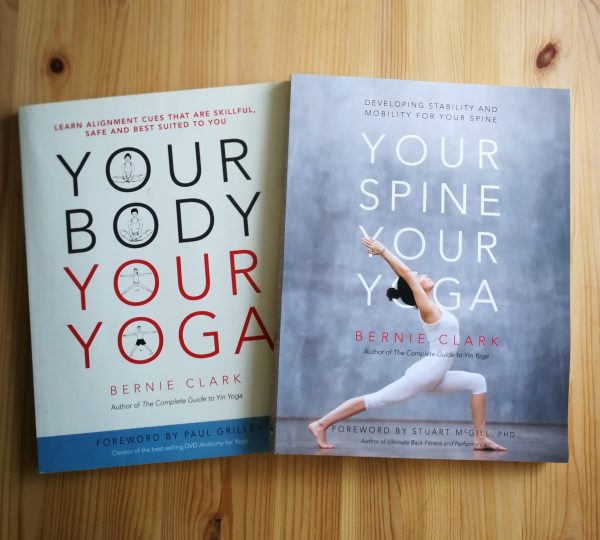What stops you in your yoga practise?
As a yoga teacher, I am always interested in deepening my understanding of the body and its movement.
Two of my favourite books on the subject are ‘Your body your yoga’ and ‘Your spine your yoga’ by Bernie Clark.
I believe it is not just important for me and other yoga teachers to be aware of what Bernie Clark explains in his books, but also, for all yoga practitioners.
This is why I have summarised some key points for you in this blog post for you.
We are all different (inside and out).
When we look around, we see we all look different one from the other, it’s easy to see different colours of eyes, hair, different height and shapes, but somehow, when it comes to practicing yoga, we think we should all be able to move in the same way.
While it’s easy to see physical differences from the outside, we often forget we are different inside too.
We literally have different shape of bones, one to the other. Anatomy books only show what was found to be most common in a range of cadavers examined.
Difference is structure, make a huge difference to what is and isn’t possible for us when we move.
There are things you can do right now, things you will be able to do and things you will never be able to do. This is not a critique to you, it’s simply the reality of our existence.
What stops you from moving deeper into poses?
Physically there are two things that occur when we reach our edge: our tissue can stretch no further (tension) OR our body is hitting itself (compression).
Tension can be found in muscles, fascia, ligaments and joint capsules. Compression can be flesh on flesh (forward fold, chest hits thigh), bones on flesh (hip point hitting front of thigh in a lounge) or bone hitting another bone.
When we first come to yoga, we are more likely to find that tension restricts our movements, but after a while we will no longer face restrictions due to tension, but reach points of compression.
Our intention is not to become hyper-mobile in the joints, so we accept limitations and do not stretch further.
Tension: we have control over – we can change it.
Compression: will not change with further practice.
As you practice begin to feel what is stopping you. There may be situations when the answer is obvious for you, and others where it may not. What’s important is that you start paying attention.
No pain, no pain
When we reach a point of compression, we can stay there as long as there is no pain. Compression is NOT BAD, painful compression IS. Painful tension is not good either. [Pain is not good].
Compression is not bad. In fact, we need to compress tissues in order to stimulate the body at a cellular level. Bones, cartilage, ligaments and joint capsule need stress to be healthy. If we refrain from stressing out tissues we risk creating fragility in the body. But we need to stress them appropriately. We can do too much of anything. Too little leads to atrophy, too much to tissue degeneration.
Being mindful is key
Practicing mindfully is key to a safe practice. Pay attention to your edge. We can do this when we practice at a slower pace and stay focused.
It’s not just about the body
Be aware what is stopping you may have no physical component at all, it may be psychological or emotional.
When we move the body like we do in yoga, we may also trigger an emotional response. There is a circular flow between body/heart/mind… Our emotions cause bodily responses, our body’s movements cause emotional responses.
Another factor that reduces our mobility is the nervous system’s interaction with muscles and fascia.
Breathing has a direct impact on the nervous system, hence the importance of long steady breaths during the practice.
To summarise
Just like two people don’t look exactly the same on the outside, they don’t on the inside either.
It is dangerous for a yoga student to think he/she can do any pose to any depth if he/she tries harder (and the risk is made greater when the teacher believes the same).
Our bones are unique as anything else in our body. Depending on their shape, structure and orientation, we will be more or less able to move as others do.
Pushing beyond compression leads to injury, not progress.
If you are interested to read more about it:
Your body, your yoga – Bernie Clark
Your spine, your yoga – Bernie Clark

